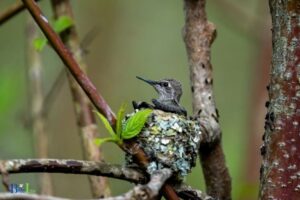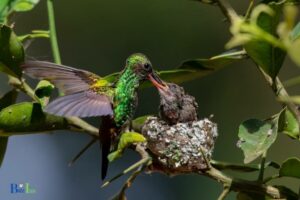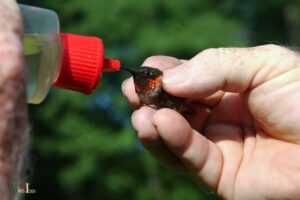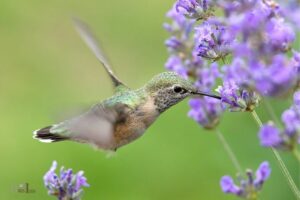How to Grow a Hummingbird Tree? 10 Steps!
To grow a hummingbird tree, also known as Sesbania grandiflora, follow these steps: choose a suitable location, plant seeds or seedlings, provide proper care including watering, fertilizing, and pruning, and protect the tree from pests and diseases.
The hummingbird tree is a fast-growing, deciduous tree native to Southeast Asia. Its unique flowers, ranging in color from white to red, attract hummingbirds and other pollinators.
This tropical tree thrives in warm climates and can grow up to 10-15 meters tall. Planting and maintaining a hummingbird tree can be an attractive addition to your garden or landscape.
Before planting your hummingbird tree, ensure the location receives full sunlight and has well-draining soil, as these trees don’t tolerate waterlogged conditions.
Start by germinating seeds indoors or directly sowing them into the ground, covering them with a thin layer of soil. Once the seedlings reach about 6 inches tall, transplant them to their permanent spot.
Water the tree regularly, allowing the soil to dry between waterings. Provide a balanced fertilizer every 4-6 weeks during the growing season. Remember to prune the tree annually to maintain its shape and encourage new growth.
Finally, monitor for pests and diseases, such as caterpillars and fungal infections, and take appropriate action to keep your tree healthy.
Step-by-Step Guide to Grow a Hummingbird Tree
| Step | Description |
|---|---|
| 1 | Choose a location for your hummingbird tree with well-drained soil and partial to full sun exposure. |
| 2 | Select a hummingbird-friendly tree species, such as trumpet vine, red buckeye, or flowering quince. |
| 3 | Purchase a sapling from a local nursery or propagate one from a cutting or seed. |
| 4 | Prepare the soil by digging a hole twice as wide and equal in depth to the root ball of the sapling. |
| 5 | Place the sapling in the hole, ensuring the top of the root ball is level with the surrounding soil. Gently fill in the hole, firming the soil around the roots to eliminate air pockets. |
| 6 | Water the sapling deeply after planting. Maintain consistent moisture, but avoid over-watering. |
| 7 | Apply a layer of mulch around the base of the tree, leaving a few inches of space between the mulch and trunk, to help retain moisture and regulate soil temperature. |
| 8 | Prune the tree as needed to maintain its shape and encourage branching, typically in late winter or early spring. Remove any dead, diseased, or damaged branches. |
| 9 | Monitor the tree for pests and diseases, and treat as necessary, following the recommendations of a local gardening expert or horticulturist. |
| 10 | Plant complementary flowers and plants around the base of the tree to attract more hummingbirds, such as salvia, bee balm, and coral bells. |
Key Takeaway
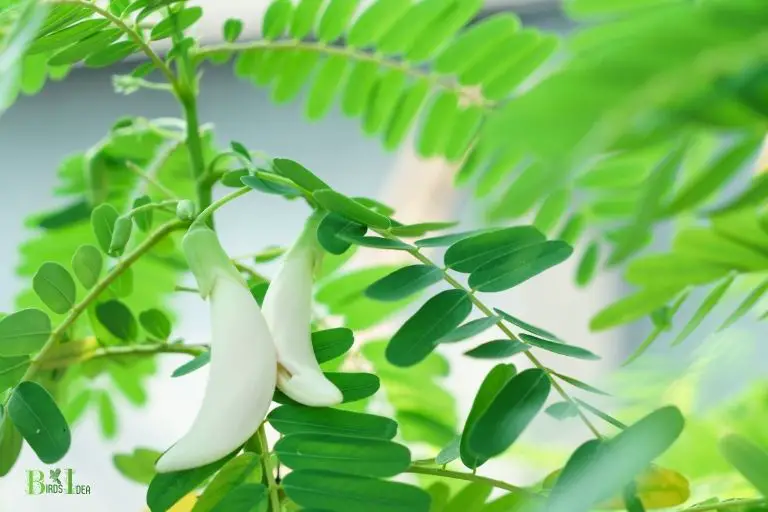
Five Facts About Growing a Hummingbird Tree
Understanding The Hummingbird Tree
Hummingbird trees have become a popular choice among gardeners who enjoy watching hummingbirds glide through their gardens.
It is essential to understand the basic characteristics of these tropical trees before deciding to grow one.
Different Varieties Of Hummingbird Trees
Various species of hummingbird trees exist, but the most commonly grown include:
- Flame tree: The flame tree is a small evergreen tree that produces exquisite reddish-orange flowers throughout the year.
- Bottlebrush tree: The bottlebrush tree is famous for its unique crimson-colored flowers that resemble a bottlebrush.
- African tulip tree: This tree produces large bright red or bright orange bell-shaped flowers.
- Jacaranda tree: The jacaranda tree has beautiful purple-blue flowers that bring a stunning display to any garden.
Why Grow A Hummingbird Tree
Hummingbirds are not only unique creatures but also beneficial pollinators.
Here are some reasons why you should grow a hummingbird tree:
- Hummingbird trees produce colorful and vibrant flowers that will bring a beautiful display to your garden.
- Hummingbirds will be attracted to the bright hues of the flowers, making your garden a perfect habitat for them to flourish and mate.
- Hummingbirds act as significant pollinators, helping to grow more plants and trees.
- Growing a hummingbird tree is a relatively easy process that requires minimal maintenance.
These are just some of the reasons why you should consider growing a hummingbird tree in your garden.
With a bit of care and patience, you can enjoy a stunning display of colorful flowers while providing a perfect habitat for these unique creatures.
Preparing Your Garden For A Hummingbird Tree
Hummingbirds are a delight to watch, and one way to attract them to your garden is by growing a hummingbird tree. This type of tree produces nectar-rich flowers that hummingbirds love to feed on.
To ensure that your hummingbird tree thrives, it is important to choose the right spot in your garden and to prepare the soil adequately.
We’ll discuss the climate and soil requirements for a hummingbird tree, how to choose the right spot to plant it, and how to properly maintain it.
Climate And Soil Requirements
Before planting a hummingbird tree, it is essential to consider the local climate and soil conditions.
Here are the key points to keep in mind:
- Hummingbird trees are tropical or subtropical plants and thrive in warm and humid climates.
- These trees require well-draining soil, as they do not tolerate standing water around the roots.
- If you live in an area with heavy clay soil, you may need to amend the soil with organic matter to improve drainage.
- Hummingbird trees require full sun to produce abundant flowers and nectar.
- If you live in a colder climate, you may need to protect your hummingbird tree from frost and freezing temperatures.
Choosing The Right Spot In Your Garden
Hummingbird trees require a spot that receives full sun for most of the day.
When choosing the right spot in your garden, keep the following in mind:
- Make sure the area is well-drained and does not have standing water.
- Avoid planting your hummingbird tree near large trees or shrubs, as this will compete with the tree for nutrients and water.
- Choose an area that is sheltered from strong winds, as hummingbird trees have delicate branches that can break easily.
Planting And Maintaining Your Hummingbird Tree
When it comes to planting and maintaining your hummingbird tree, it is essential to follow these steps:
- Dig a hole that is twice the size of the root ball of your tree.
- Mix some organic matter into the soil to improve drainage and encourage root growth.
- Place the tree in the hole and backfill with soil.
- Water the tree immediately after planting and keep it well watered for the first few weeks to help the roots establish.
- Once established, water your hummingbird tree regularly, especially during dry spells.
- Prune your tree regularly to maintain its shape and encourage new growth.
Fertilizing Your Hummingbird Tree
Hummingbird trees thrive on a balanced fertilizer, which can be applied as follows:
- Apply a balanced fertilizer, such as a 10-10-10 or 20-20-20, in early spring when new growth begins.
- Apply another round of fertilizer in late summer or early fall to promote healthy growth.
- Avoid over-fertilizing, as this can damage the tree and reduce its nectar production.
Growing a hummingbird tree is a rewarding experience that can attract these delightful birds to your garden.
By following these tips for preparing your garden, choosing the right spot, and properly maintaining your tree, you can ensure that your hummingbird tree thrives and produces plenty of nectar-rich flowers for years to come.
Taking Care Of Your Hummingbird Tree
Growing a hummingbird tree in your garden can be a joyous experience. With its vibrant blooms and frequent visitors, watching hummingbirds flutter around the tree is a sight to behold.
However, like any other plant, taking good care of your hummingbird tree is essential to help it reach its full potential.
Here’s what you need to know about caring for your hummingbird tree under four distinct heads.
Watering Your Hummingbird Tree
Water is essential for all plants, and hummingbird trees are no exception. While it is important to keep the soil consistently moist, the tree should never be excessively watered. Over-watering may lead to root rot, which can be fatal for the tree.
The amount of water will depend on the soil type and the climate in your area but a general rule of thumb is to water your hummingbird tree frequently but only enough that the soil is moist to the touch.
Pruning Your Hummingbird Tree
Hummingbird trees need pruning to help them maintain their shape and size. You should prune back any dead, weak, or diseased branches regularly.
It is advisable to prune after the flowering season but before the new growth appears in spring. The best time of year to do the pruning will depend on the specific type of hummingbird tree you have.
Generally speaking, a light prune in autumn and a more rigorous prune of leftover branches in springtime will do the trick.
Protecting Your Hummingbird Tree From Diseases And Pests
Hummingbird trees sometimes attract pests or develop diseases which can harm their overall health. The most common pests are aphids, spider mites, and various types of caterpillars.
Keeping the tree healthy and clean is the best way to prevent disease and pests, as well as catching any signs of infestations early. Organic pesticides and insecticidal soaps can help to control pests and diseases.
How To Propagate Your Hummingbird Tree
Propagating your hummingbird tree is an effective way to increase your collection. The tree can be propagated from seeds or cuttings.
However, seed propagation is more difficult and time-consuming. Cuttings are easier to propagate and root, but still require some patience and care.
It’s important to note that not all hummingbird trees can be propagated in the same way, so researching the specific type of tree you have is essential.
By following these simple yet essential tips, caring for your hummingbird tree should not be a problem. With a little bit of tlc, your tree can thrive, and you can enjoy the beauty of the hummingbirds for years to come.
Creating A Hummingbird Habitat
Growing a hummingbird tree is a fantastic way to attract these delicate and colorful birds into your garden. Hummingbirds are essential pollinators that help enhance the beauty of your garden and maintains the ecological balance.
In this blog post, we will discuss how you can grow a hummingbird tree and create an environment in which they can thrive.
Plants That Complement Hummingbird Trees
If you’re growing a hummingbird tree, it’s a good idea to plant other flora that will attract and complement their feeding preferences.
Here are some of the top plants:
- Bee balm: This plant produces nectar-rich flowers that are high in calories and attract hummingbirds.
- Cardinal flower: Cardinal flowers are long, tubular red flowers that hummingbirds find irresistible.
- Coral honeysuckle: This plant produces trumpet-shaped flowers that come in hues of red, yellow, and orange, making them an excellent complement to your hummingbird tree.
- Salvia: Salvia flowers contain lots of nectar which hummingbirds love and crave.
- Fuchsia: Fuchsia’s dangling, bell-shaped flowers are the perfect shape for a hummingbird to enjoy.
- Butterfly bush: The nectar-rich flowers of the butterfly bush produce the perfect environment for hummingbirds to exploit when feeding.
Creating A Hummingbird-Friendly Environment
Creating a hummingbird-friendly environment goes beyond just planting the right plants.
Here are some additional tips to ensure your garden is a welcoming habitat:
- Provide nesting materials: Hummingbirds love to nest close to their food sources. Providing nesting material like soft nesting fibers, cotton, and spider silk can help make your garden even more attractive to hummingbirds.
- Add perches: Hummingbirds need a place to rest and perch after feeding. Add thin perches in your garden to provide them with resting spots.
- Provide water: Hummingbirds also need water to hydrate and bathe. Adding a bird bath or a fountain to your garden is an excellent way to provide water while also adding to the visual appeal.
- Avoid using insecticides: These chemicals kill the insects that hummingbirds feed on, so avoid using them or opt for organic alternatives.
Attracting And Feeding Hummingbirds To Your Garden
To attract and feed hummingbirds in your garden, here are some useful tips to keep in mind:
- Use feeders: Hummingbird feeders are an effective way to offer food to hummingbirds. Opt for feeders with red bases, which will help attract them to your garden.
- Make your nectar solution: Mix four parts water with one part white sugar to create a safe and effective nectar solution that you can place in your feeder.
- Hang the feeder: Place your feeder in a visible spot, preferably in a shaded area to keep the nectar fresh for longer.
- Clean your feeder: Change your feeder’s nectar solution at least once a week to keep it fresh and clean it regularly to prevent the growth of harmful bacteria.
By growing a hummingbird tree and creating a hummingbird-friendly environment, you can attract these beautiful birds into your garden and help maintain your garden’s ecological balance.
Remember, adding a variety of flora, creating the perfect habitat, and using feeders are effective ways to attract and feed them.
So, create a welcoming habitat for these delightful birds, and they’ll reward you with their acrobatic displays and vibrant colors.
FAQ On Hummingbird Tree
How Do I Plant A Hummingbird Tree?
What Kind Of Soil Does A Hummingbird Tree Need?
How Much Water Does A Hummingbird Tree Need?
How Do I Prune A Hummingbird Tree?
What Can I Do To Attract Hummingbirds To My Tree?
Conclusion
Now that you have learned how to grow a hummingbird tree, it is important to remember that patience is key. Like any other tree, it will require attention and care to reach its full potential. Make sure to provide adequate water, fertilizer, and sunlight to ensure healthy growth.
Be mindful of pests and diseases that may affect the tree and take necessary steps to prevent their spread. Remember that the tree is not only beautiful but also provides a vital habitat for hummingbirds and other wildlife.
With proper care and attention, you can enjoy the natural beauty and stunning colors of the hummingbird tree for years to come. So go ahead, plant your tree, tend to it lovingly, and sit back to watch the hummingbirds as they come to feed and play in your backyard. Happy gardening!

